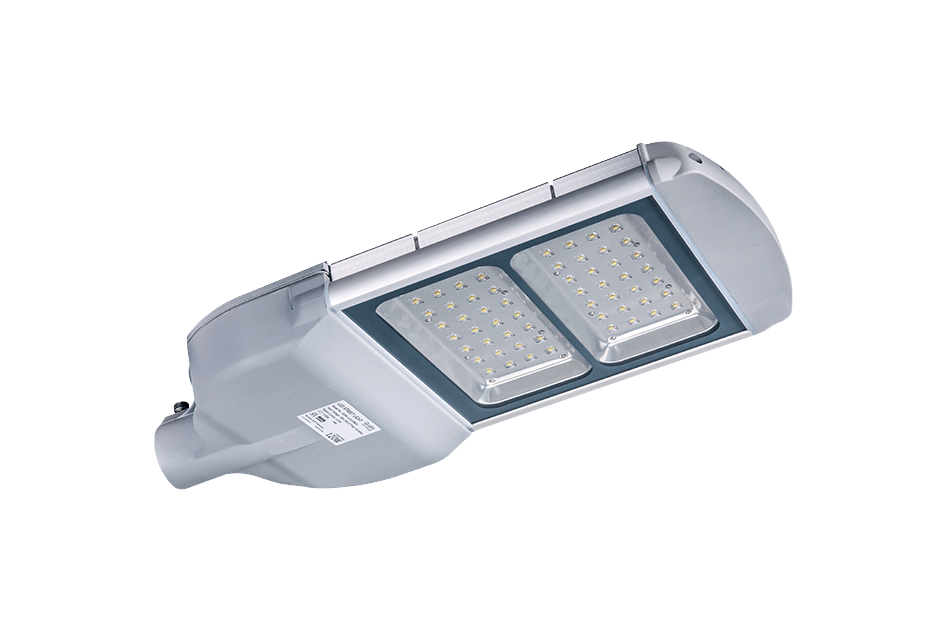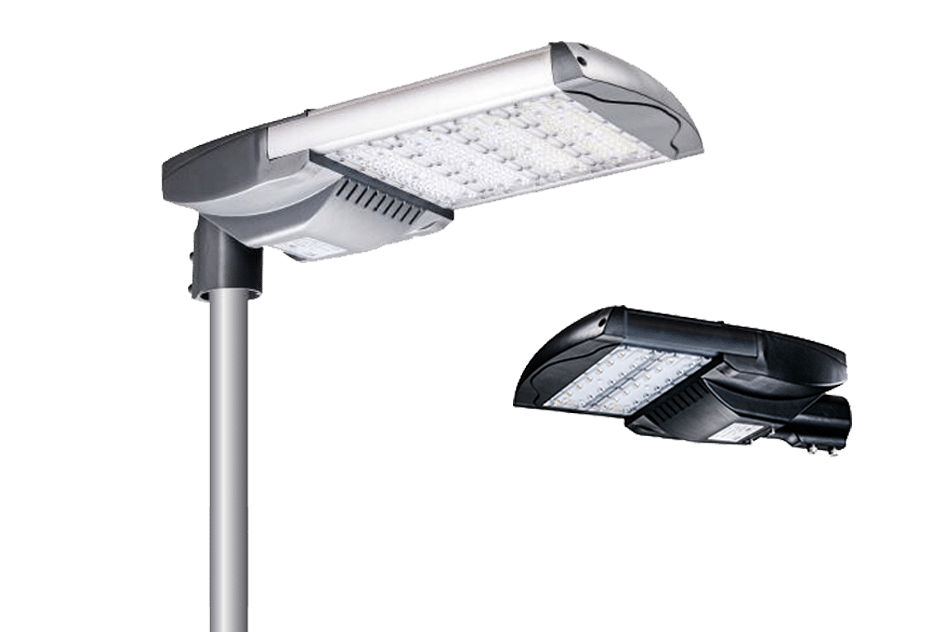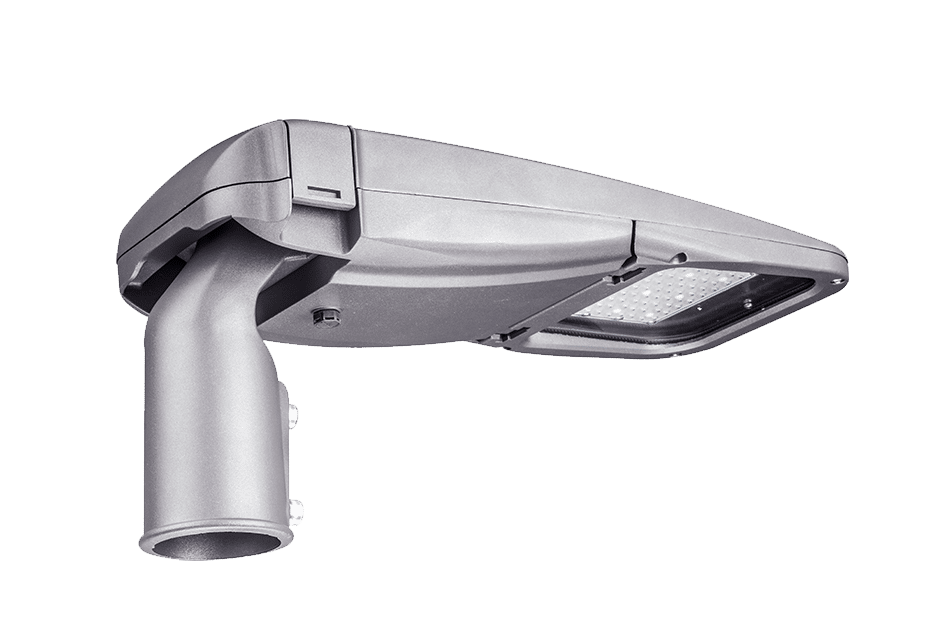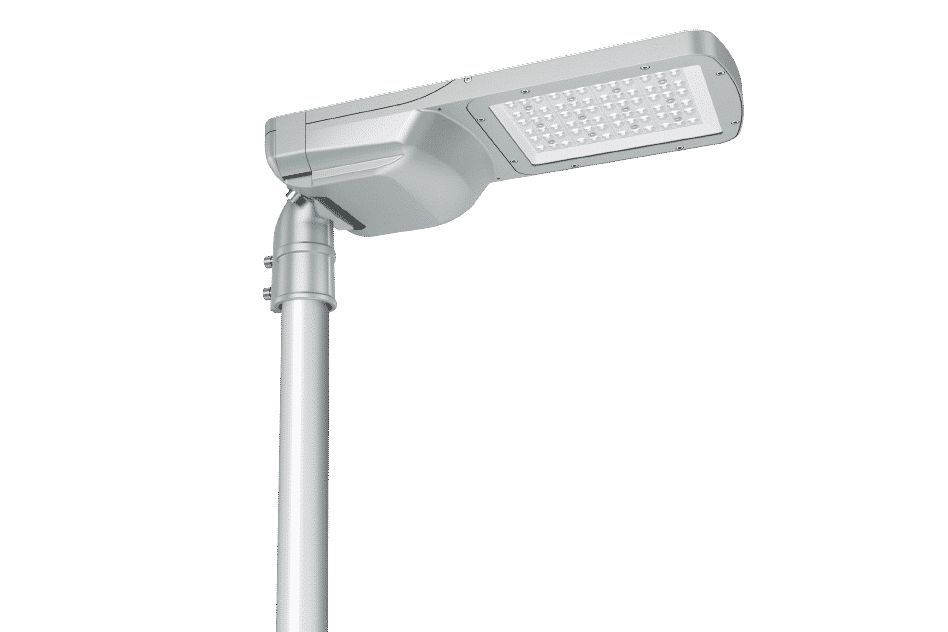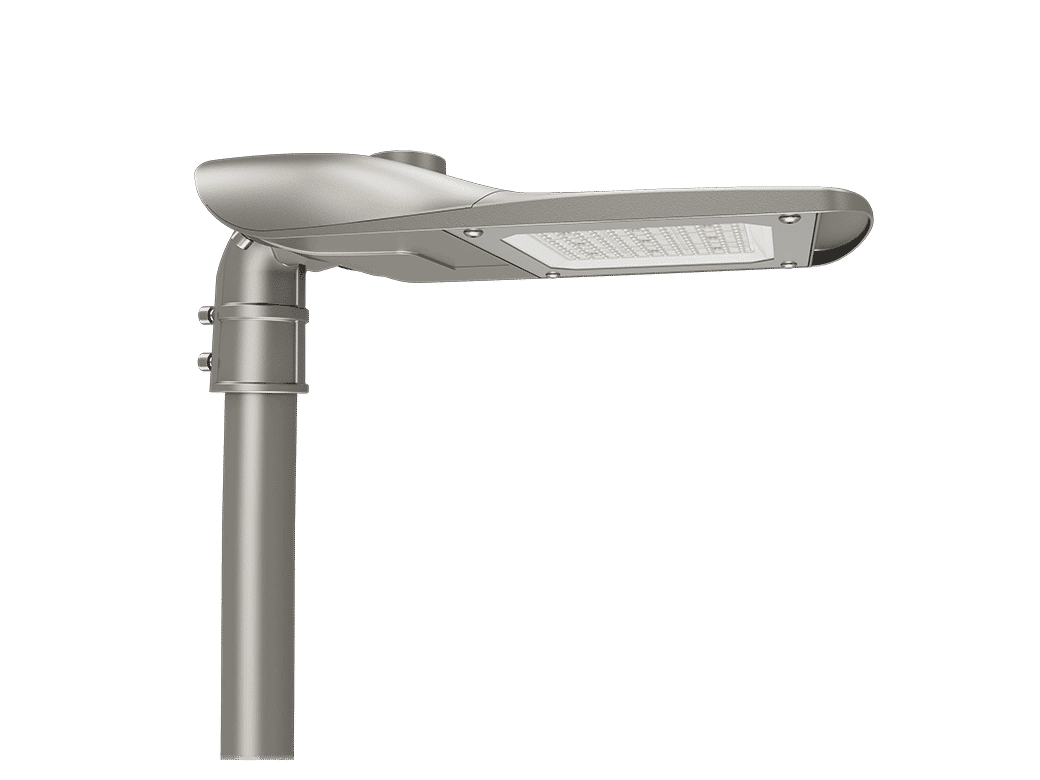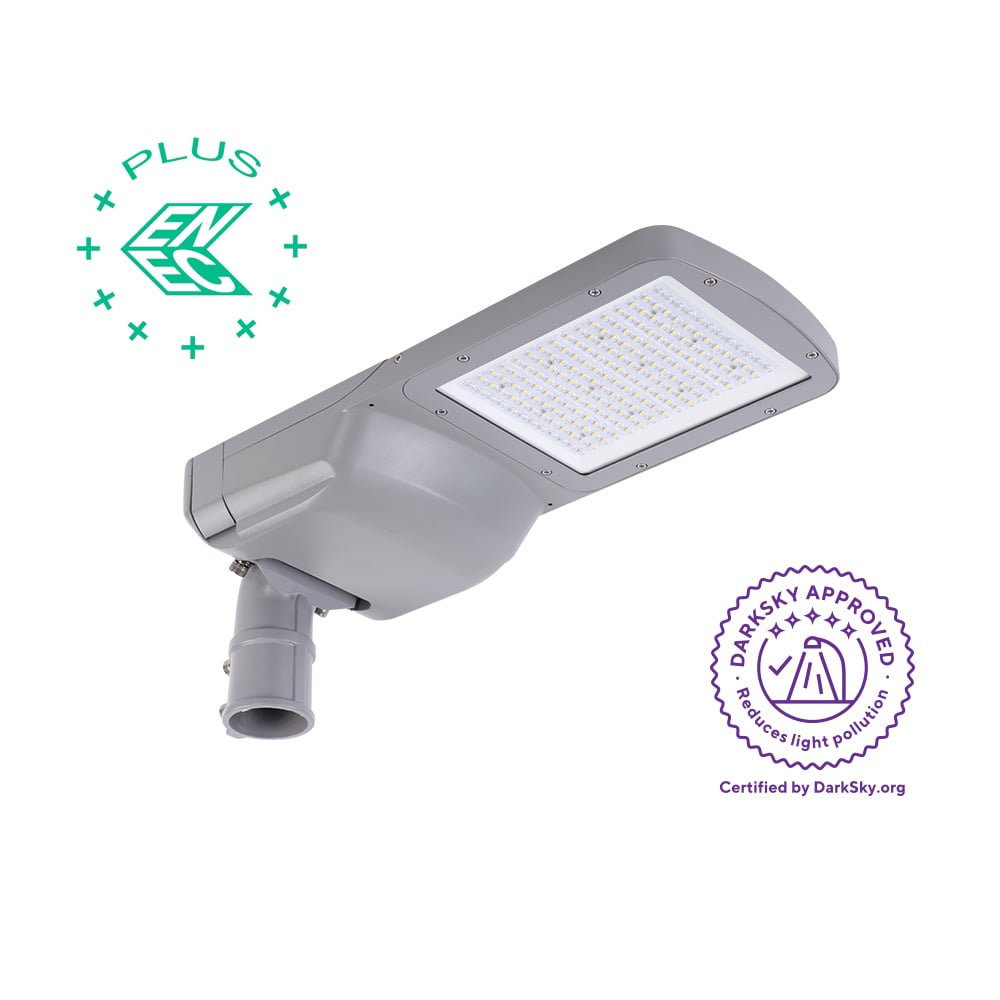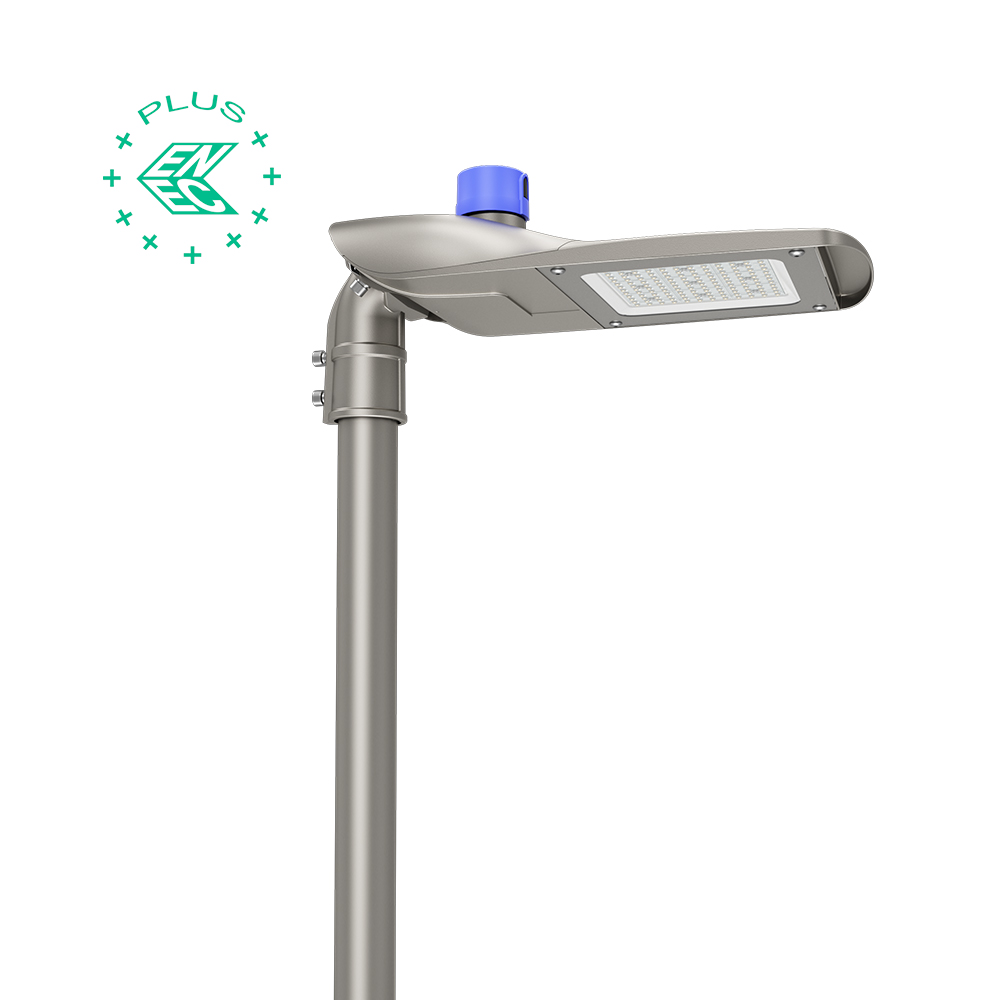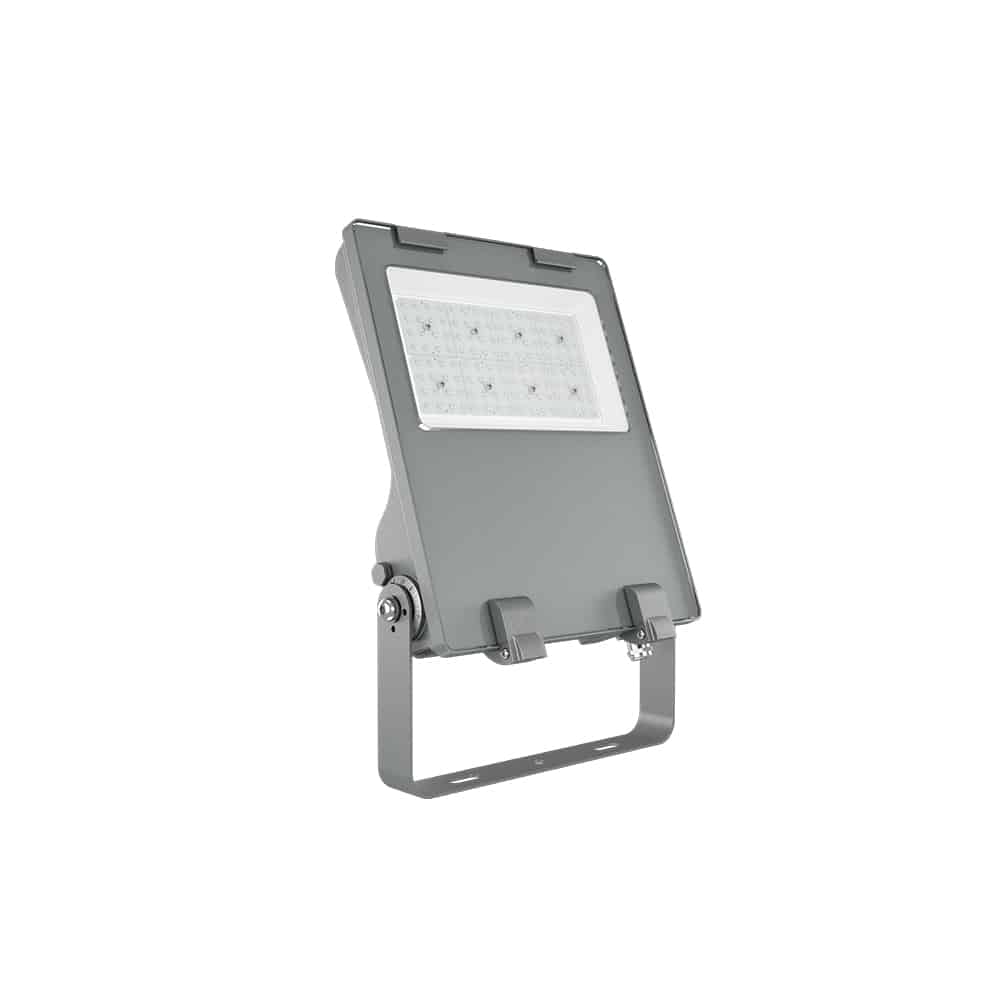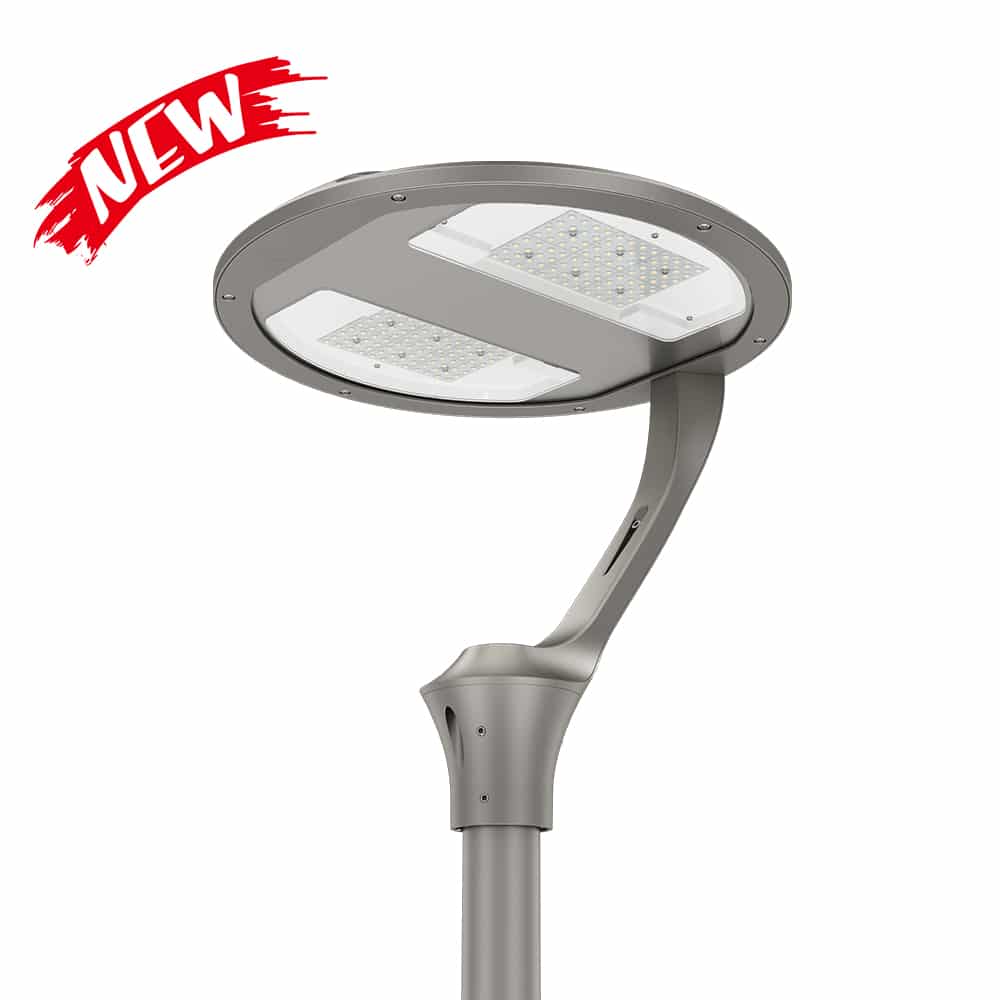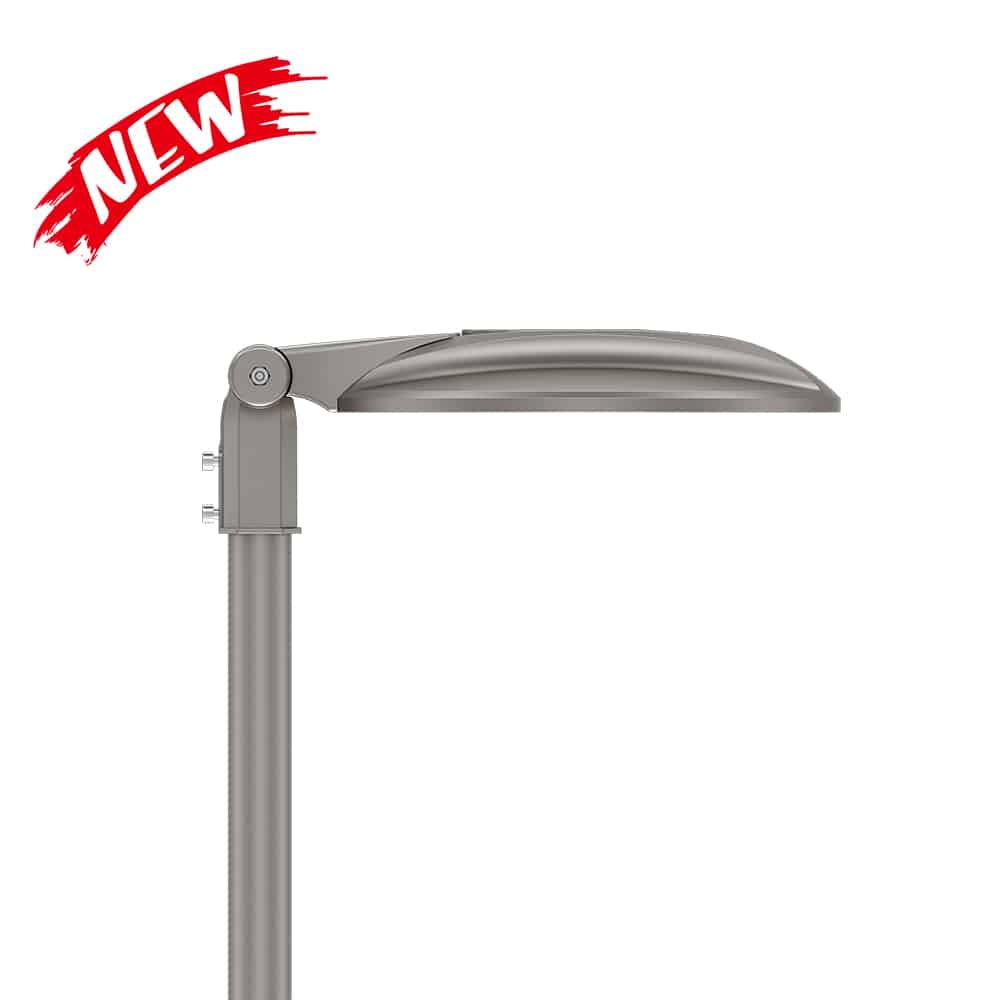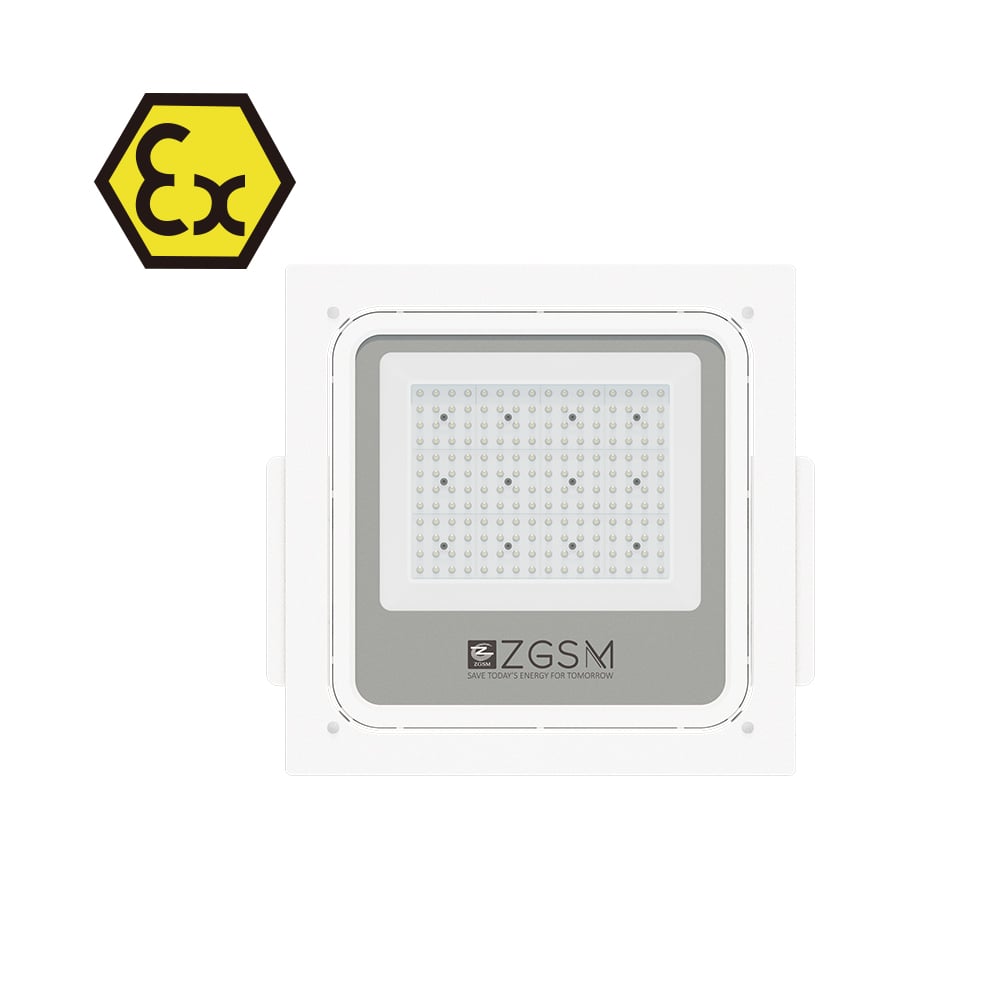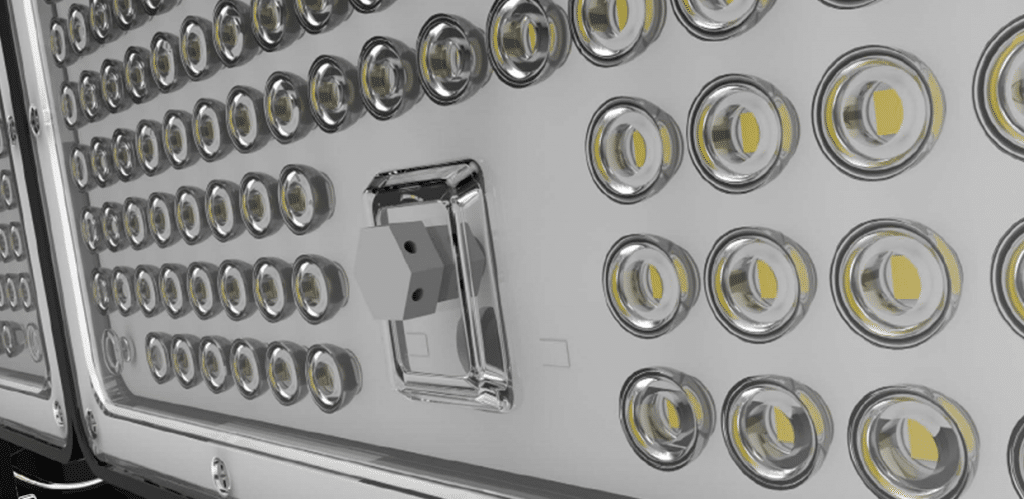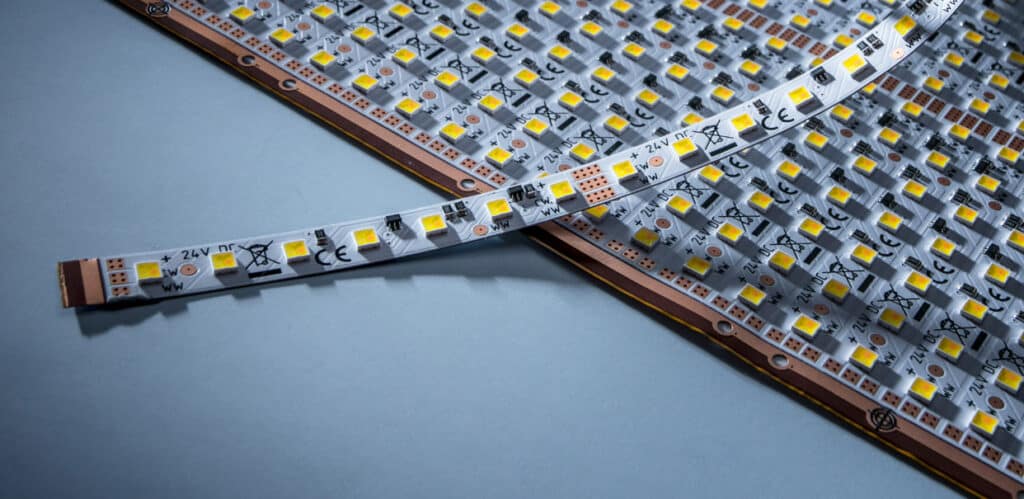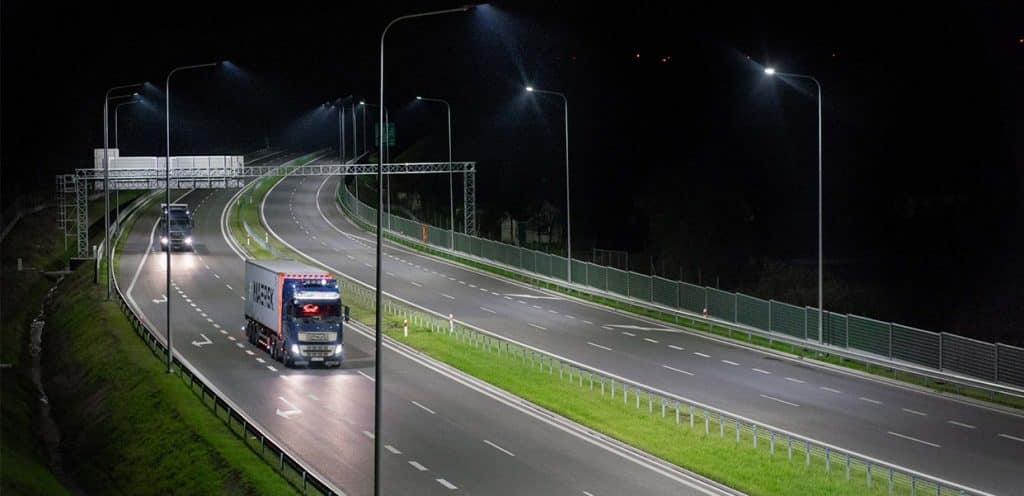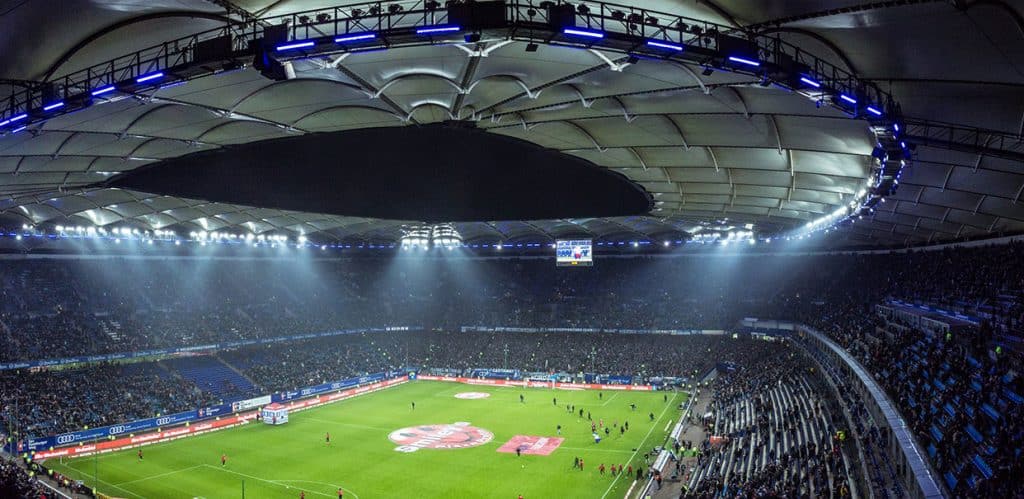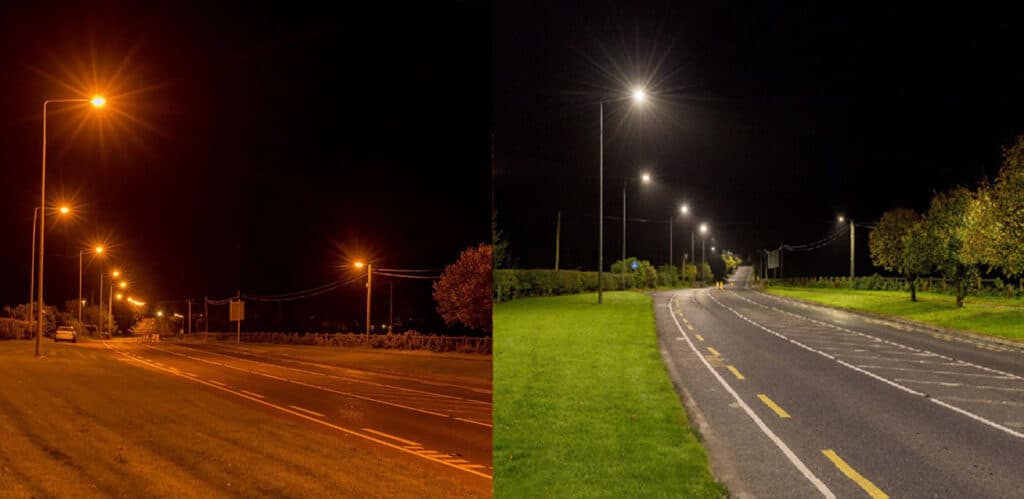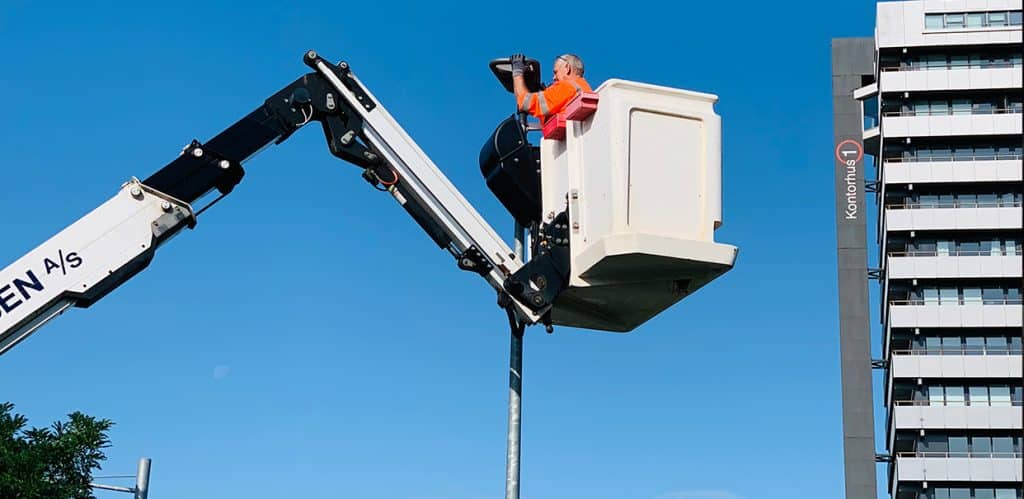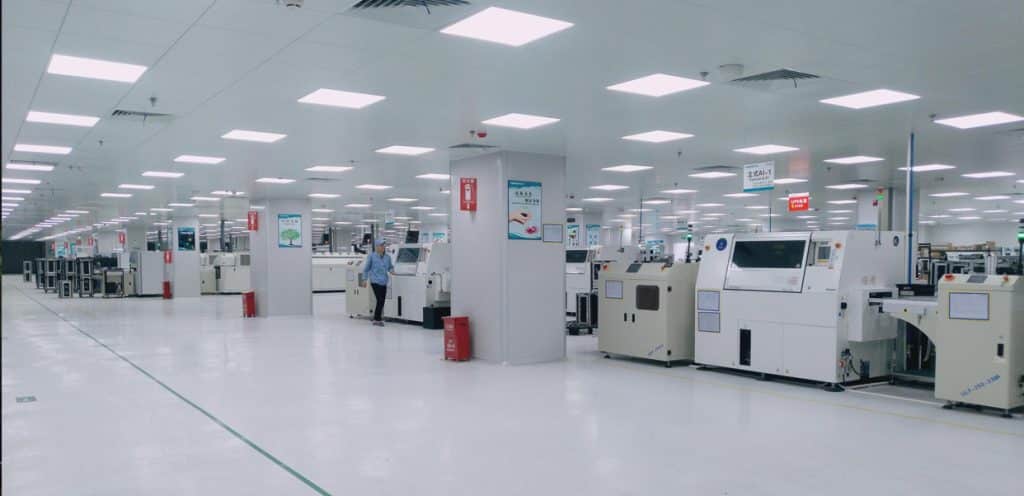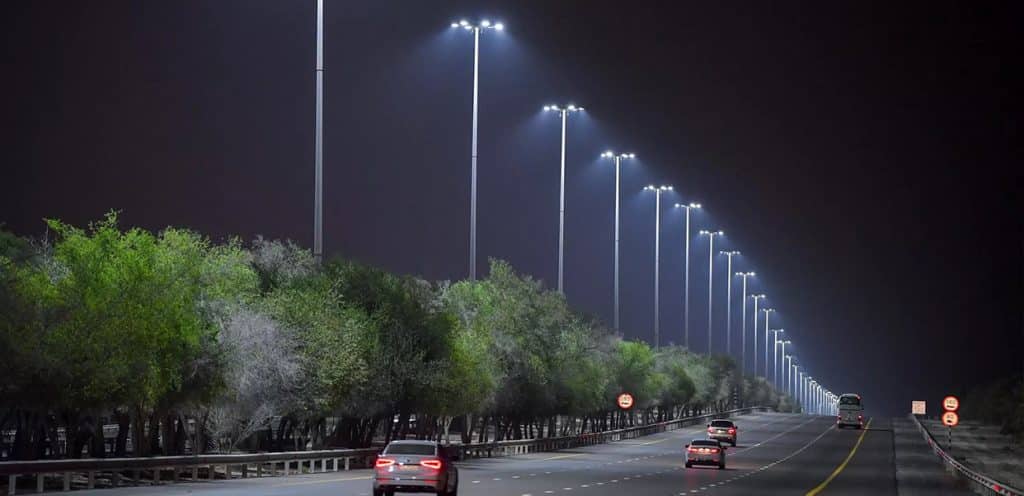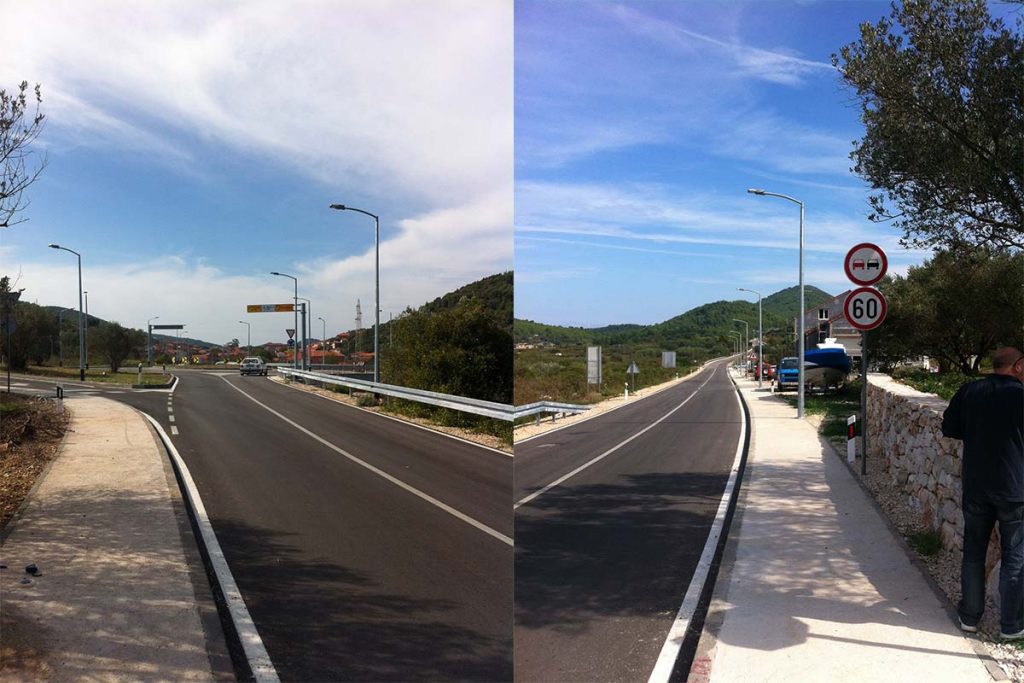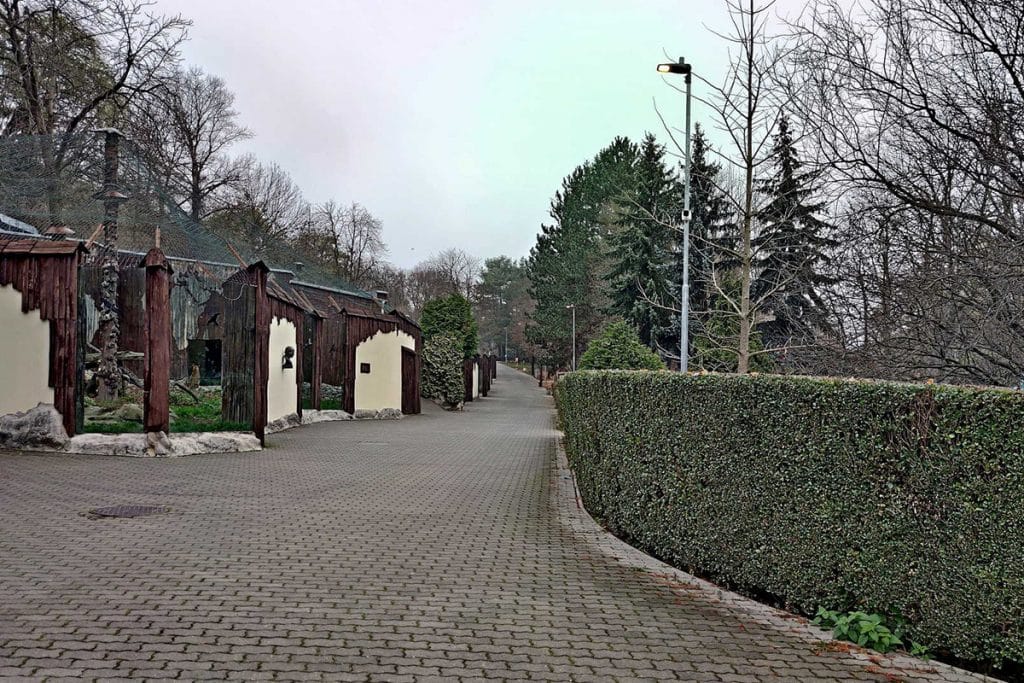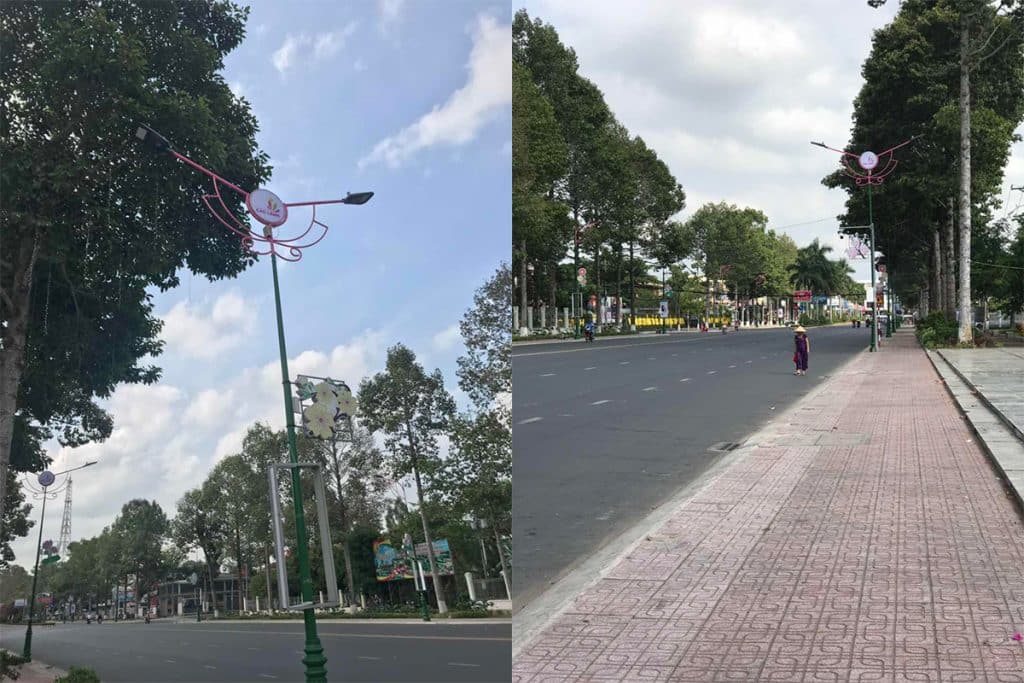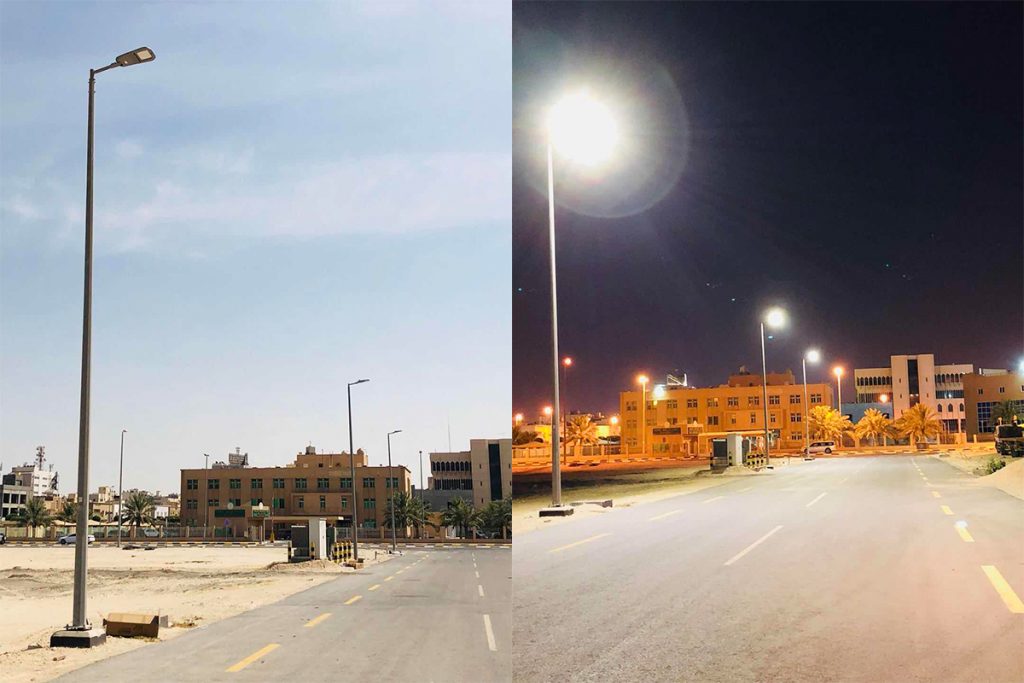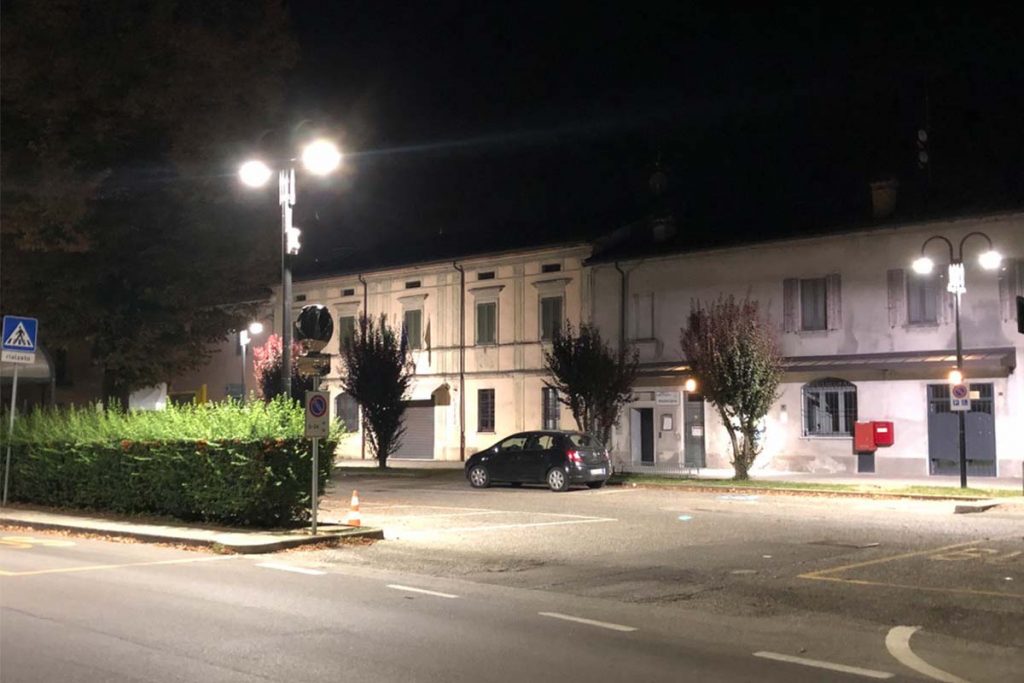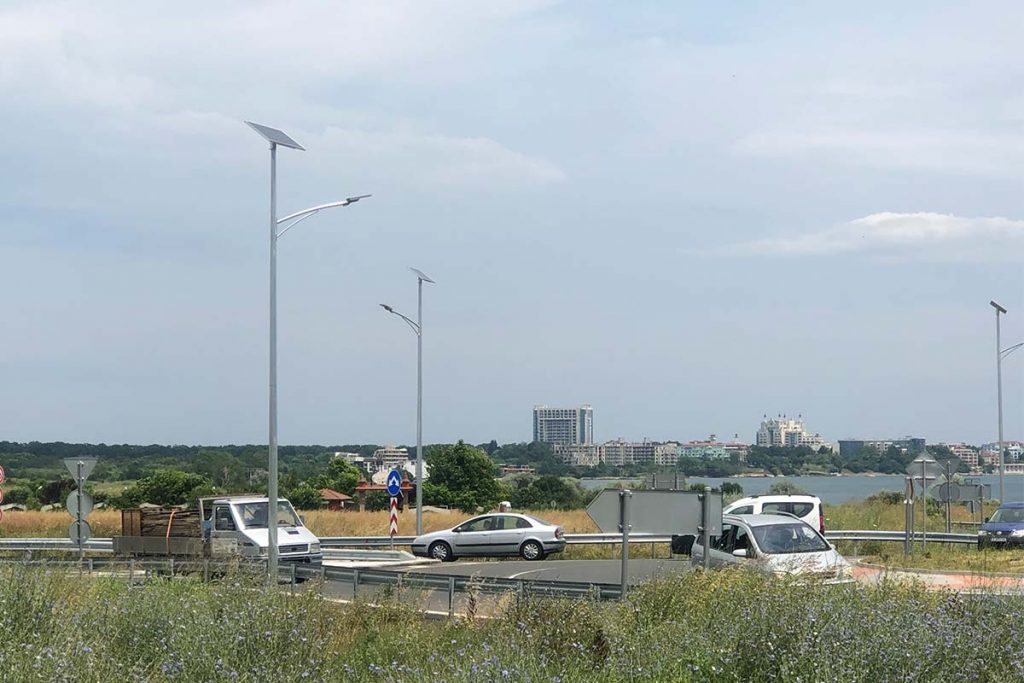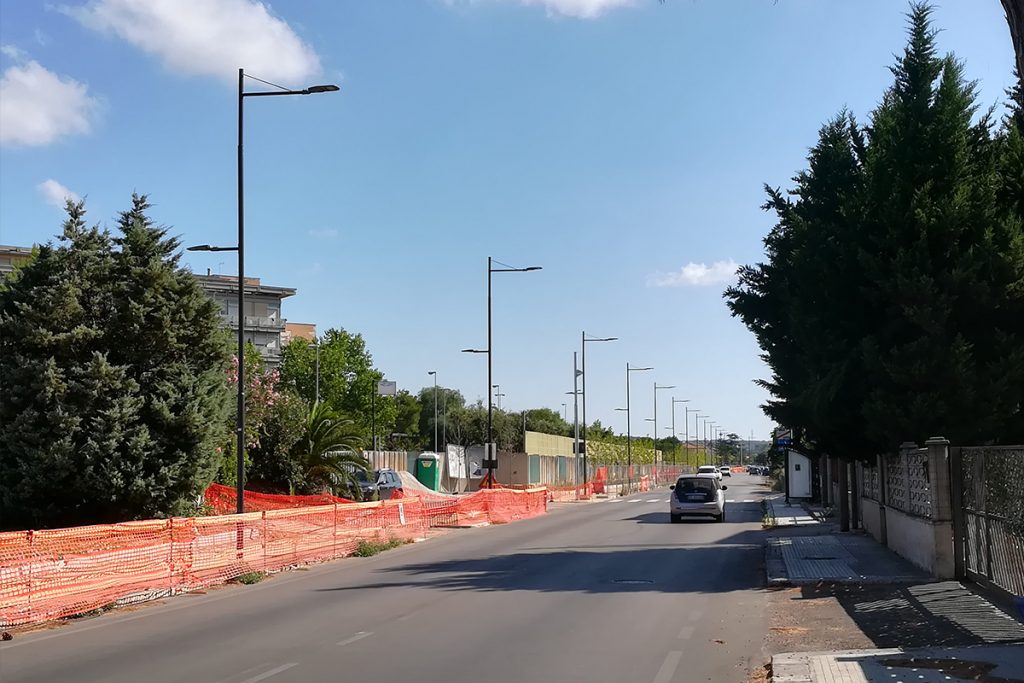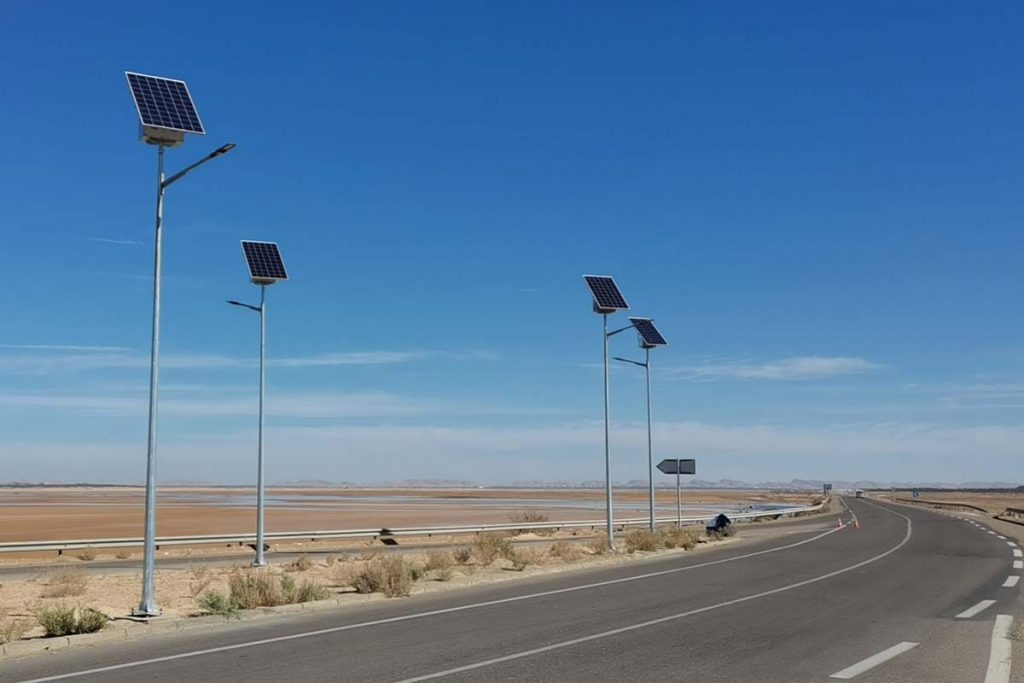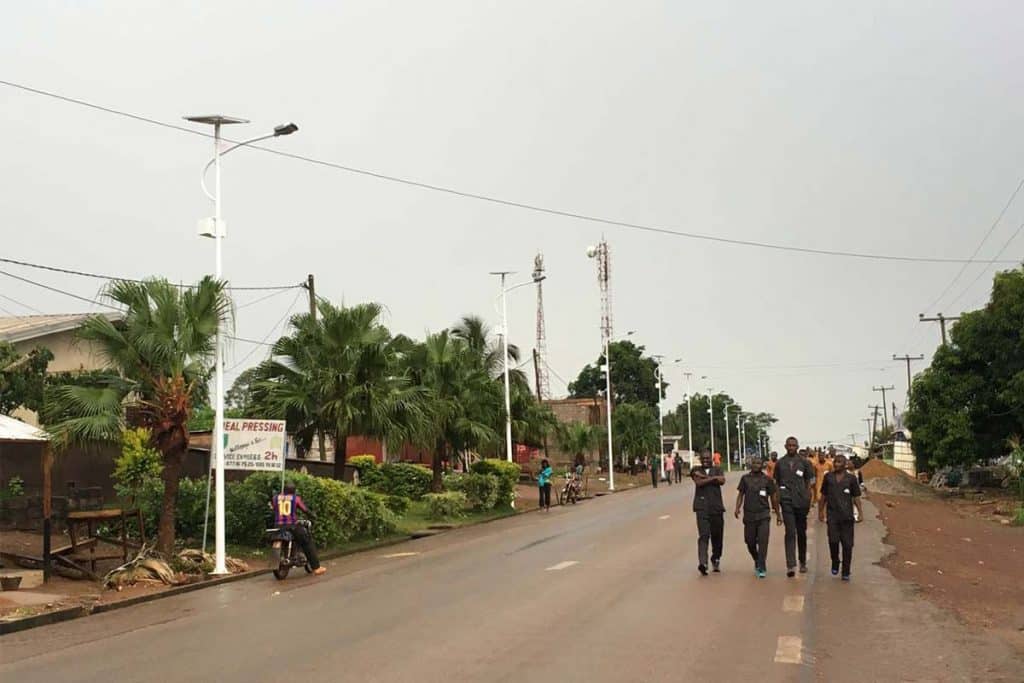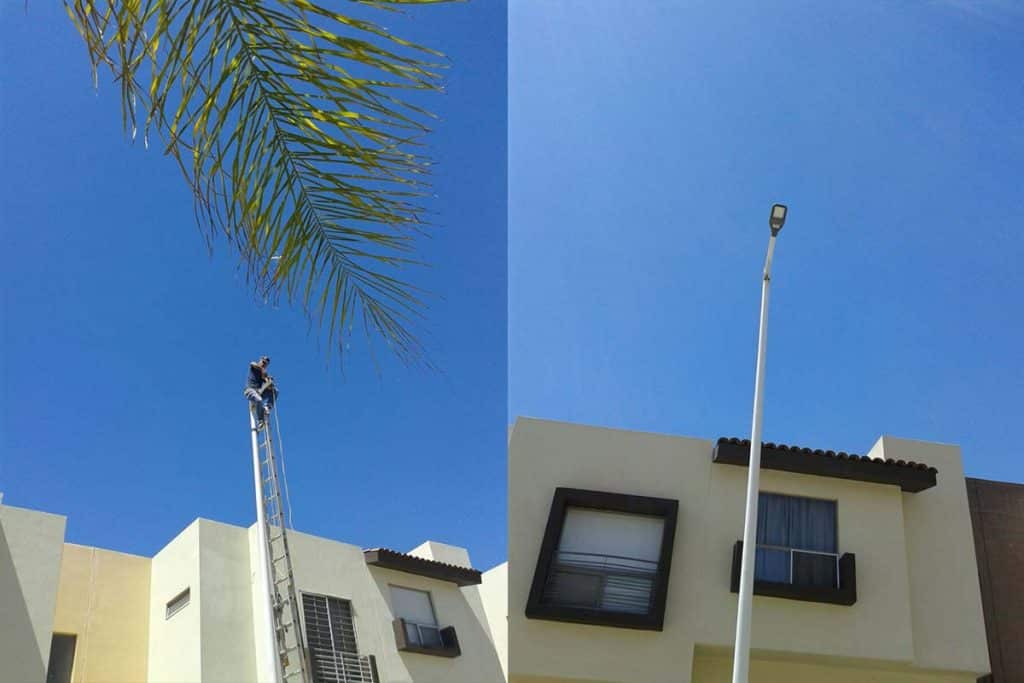Shining Brighter, Saving Smarter – Energy saving lighting
Shining Brighter, Saving Smarter – Energy saving lighting
Introduction
Today, countries worldwide are universally concerned about issues related to population, resources, and the environment, as these issues are closely tied to the sustainable development of human society and the economy. Among them, the field of lighting has the closest relationship with resources and the environment. The 1973 global energy crisis led countries to attach great importance to energy saving lighting, and they put forward principles and measures for energy-efficient lighting. In this context, the concept of green lighting was first proposed by the United States Environmental Protection Agency at the end of 1991, with the core goal of protecting the environment through saving lighting energy. Subsequently, countries actively promoted the implementation of green lighting projects and achieved increasingly significant social, economic, and environmental benefits. The prospects for the implementation of green lighting are broad and have enormous development potential.
Currently, China has also made promoting green lighting, promoting energy saving lighting, and improving lighting quality as the core of its work, and has perfected the standard system for green lighting. At present, China has established energy efficiency standards for commonly used lighting sources, ballasts, and other products, as well as various architectural lighting standards, and has improved measures and management mechanisms for implementing green lighting projects. China continues to comprehensively promote the development of green lighting, striving to improve lighting energy efficiency, reduce energy consumption, and improve environmental quality. This article will elaborate on the purpose, basic principles, technical measures, and evaluation criteria of green lighting in detail.
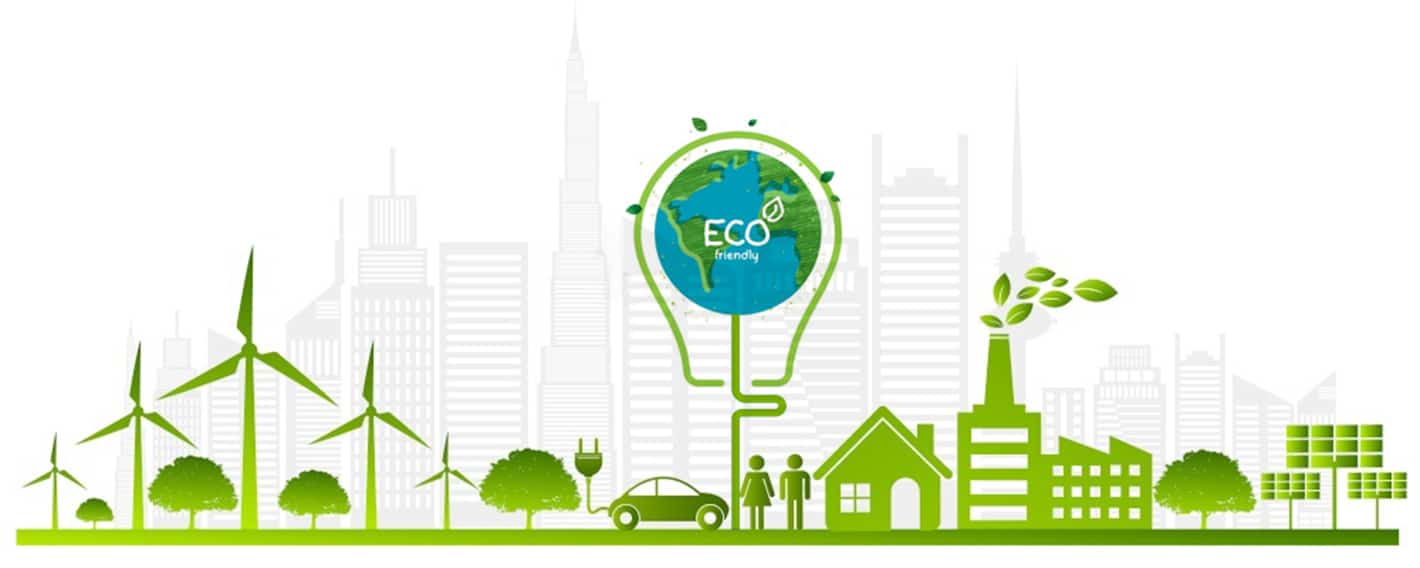
Why go with energy saving lighting?
The goal of green lighting (Energy saving lighting) is to conserve energy, protect the environment, enhance productivity, work efficiency, learning effectiveness, and quality of life for individuals while also prioritizing physical and mental well-being.
Energy conservation: The electrical energy consumed by artificial lighting primarily comes from the combustion of fossil fuels. However, the Earth’s reserves of oil, natural gas, and coal are limited, posing challenges to the world’s energy supply. Therefore, energy conservation is crucial for preserving Earth’s resources and achieving sustainable development. According to estimates by the International Commission on Illumination (CIE), lighting electricity consumption in developed countries accounts for approximately 11% of total electricity consumption, with an average per capita lighting electricity consumption of around 1200 kWh. In China, lighting electricity consumption similarly accounts for approximately 10% to 12% of total power generation. With economic development and improved living standards, the demand for lighting continues to grow, making energy-efficient lighting highly promising.
Environmental protection: The combustion of fossil fuels releases harmful gases such as carbon dioxide (CO2), sulfur dioxide (SO2), and nitrogen oxides (NOx), leading to environmental issues such as ozone depletion, global warming, and acid rain. Carbon dioxide is one of the main factors contributing to global warming, with around 80% of CO2 emissions originating from the combustion of fossil fuels. According to data from the United States, saving 1 kWh of electricity can significantly reduce the emission of atmospheric pollutants. Therefore, energy conservation is vital for environmental protection.
Improving lighting quality: Green lighting (Energy saving lighting) emphasizes a people-centric approach, aiming to enhance the quality of production, work, learning, and daily life while safeguarding physical and mental well-being. In addition to energy conservation and environmental protection, lighting should also focus on improving quality. The illuminance of lighting should meet the visual requirements of specific settings and possess excellent lighting quality, including uniformity of illuminance, glare control, color rendering of light sources, and appropriate color representation. Energy conservation and environmental protection, while ensuring the quantity and quality of lighting, are aimed at creating lighting environments that promote increased productivity, work efficiency, learning effectiveness, and quality of life, as well as safeguarding physical and mental well-being. To achieve this goal, the use of high-efficiency light sources, luminaires, and electrical accessories, along with scientifically sound lighting design, is crucial.
Basic principle of energy saving lighting
The principles followed in lighting energy conservation aim to minimize lighting electricity consumption while ensuring lighting quality and creating favorable lighting environments for production, work, learning, and daily life. To achieve energy saving lighting, several developed countries have proposed energy-saving principles and measures. The International Commission on Illumination (CIE) has summarized the following nine principles:
- Determine illuminance levels based on visual task requirements.
- Energy-efficient lighting design to achieve the desired illuminance.
- Use high-efficiency light sources while ensuring color rendering and appropriate color temperatures.
- Utilize glare-free and efficient luminaires.
- Implement high reflectance materials for interior surfaces.
- Proper integration of lighting and cooling systems for heat dissipation. Currently, there are few companies working on this aspect.
- Install adjustable lighting devices that allow for switching off or dimming as needed.
- Utilize both artificial lighting and natural daylight in combination.
- Regularly clean lighting fixtures and interior surfaces, and establish lamp replacement and maintenance systems.
From these principles, it is evident that lighting energy conservation is a comprehensive engineering project that considers improving the energy efficiency of individual lighting systems. The process of light from the lighting source entering the human eye and ultimately causing visual perception is a complex physical, physiological, and psychological process, as depicted in the diagram below. To achieve energy-saving goals, it is necessary to analyze and consider various factors and propose energy-saving technical measures.

Technical strategies for energy saving lighting
Green lighting (Energy saving lighting) is not only about improving lighting effectiveness but also making a contribution to environmental sustainability. By adopting energy-efficient, environmentally friendly, and sustainable technological measures, lighting systems can achieve efficient energy utilization, reduce carbon emissions, and minimize environmental impact. Rational selection of lighting standards, proper application of lighting technologies (such as LED), choosing high-efficiency LED lighting fixtures, and implementing lighting controls (such as Zigbee, LoRa, and other dimming methods like timers, motion sensors, 0-10V, Dali, etc.) can all contribute to creating energy-saving, environmentally friendly, and comfortable lighting environments, thereby driving sustainable futures.
Selection of lighting standard
When selecting lighting standards for areas such as roads, parking lots, gas stations, factories, and stadiums, it is important to consider the specific requirements and usage conditions of each area. For road lighting, the focus is on ensuring the safety and visibility of vehicles and pedestrians. The standards selection includes metrics such as brightness, road surface illuminance, and uniformity ratio. Parking lot lighting should provide effective illumination. The standards selection considers illuminance levels, uniformity, and lighting quality. Gas station lighting needs to meet safety requirements and provide a comfortable lighting environment. Standards selection includes illuminance, color temperature, and color rendering index (CRI). Factory lighting must meet operational and safety requirements. The standards selection considers illuminance, uniformity, color temperature, and anti-glare design. Stadium lighting should meet the needs of sports events and provide a satisfying experience for spectators. The standards selection includes horizontal illuminance, uniformity, and anti-glare performance. In addition, if the stadium requires broadcasting or live streaming, higher standards for vertical illuminance and CRI might be necessary.
When choosing lighting standards, reference should be made to national or regional regulations and standards to ensure compliance with safety, comfort, and energy efficiency requirements. It is also advisable to consult with professional lighting designers or engineers, as well as taking into account the specific needs of the project. By considering these factors comprehensively, appropriate lighting standards can be selected to provide high-quality lighting environments. Below we list the corresponding lighting standards for roads, parking lots, gas stations, factories, sports fields, etc.
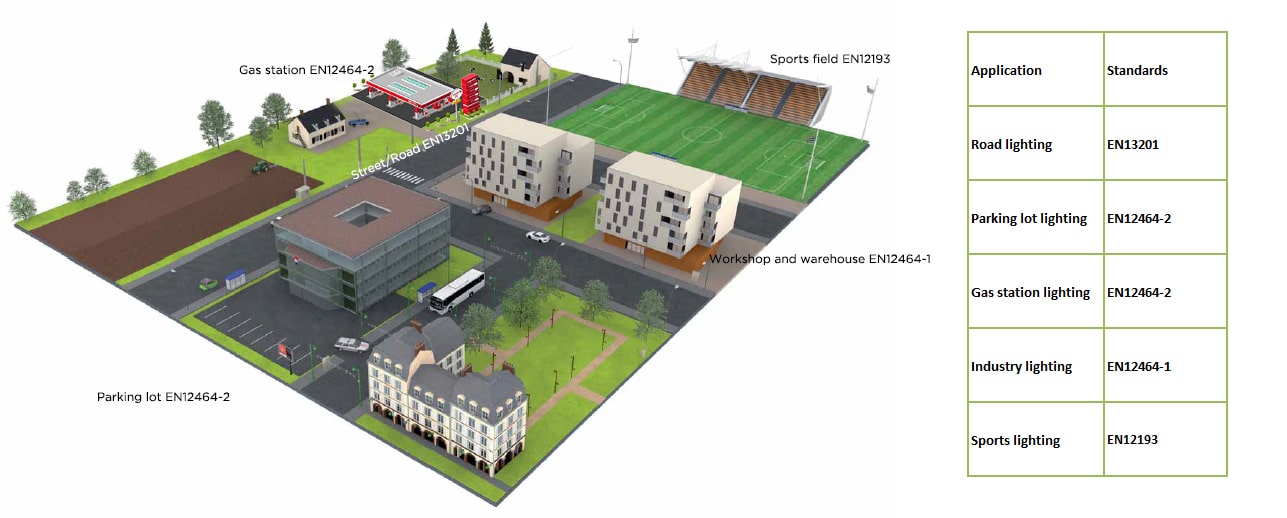
Selection of lighting mothods
When selecting appropriate lighting methods, here are some common scenarios and their potential lighting options: for example, using streetlights on roads, using streetlights and floodlights in parking lots, using canopy lights at gas stations, using UFO lights ( Please review videos of LED UFO High Bay. ) in factories, and using high-power floodlights in stadiums. To achieve green lighting (Energy saving lighting), we believe that selecting high-quality and energy-efficient lighting fixtures is crucial. Here are several key points to consider:
1. Choose efficient light sources
For new project, LED lighting solution is a good option, and at same time we shall phase out or restrict the use of inefficient light sources (such as incandescent bulbs, halogen lamps, high-pressure sodium lamps). The selected lighting sources should comply with relevant national standards and adhere to the following principles:
- High luminous efficacy, complying with energy-saving standards.
- Good color quality with a high color rendering index.
- Long lifespan.
- High cost-effectiveness.
2. Selecting efficient lighting fixtures
The efficiency of lighting fixtures and the proper configfixuration of lighting distribution have a significant impact on improving lighting energy efficiency. However, increasing the efficiency of lighting fixtures and the utilization of light involves complex issues that often conflict with controlling glare, ensuring protection (waterproof, solid object ingress protection), and meeting aesthetic requirements. These factors must be balanced and considered comprehensively. For example, in order to improve the light output efficiency of a fixture, suppliers may reduce the use of glass covers, but this may affect the fixture’s performance in terms of glare control and also have an impact on its IP (What’s Ingress Protection) and IK (Impact Protection) ratings, as exposed PC or PMMA lenses are generally more fragile.
- ZGSM D2 series
- Developed on 2009
- CE certificated
- Unavailbale, continued by H series
- ZGSM H series
- Developed on 2013
- CE and ULcertificated
- Module design with UL certificate
- ZGSM K series
- Developed on 2016
- CE, ENEC certificated
- Full die-casting auminium
- ZGSM Rifle series
- Developed on 2020
- CE, ENEC+ certificated
- Tool-less design with full sets of certificates
- ZGSM Falcon series
- Developed on 2022
- CE, ENEC certificated
- ZGSM new generation 20th street light
3. Select efficient LED drivers
LED drivers are the core components of LED lighting fixtures, and high-quality LED drivers can significantly extend the lifespan of LED fixtures. In LED drivers, high efficiency is crucial as it allows for the provision of the same output power with lower power consumption, while also improving thermal performance. High efficiency (low self-power consumption) has a positive impact on the lifespan of LED drivers. Lower power consumption means less energy is converted into heat, reducing heat accumulation inside the driver. Heat is one of the enemies of LED fixtures, as high temperatures can lead to the aging, damage, or performance degradation of electronic components. By selecting high-efficiency LED drivers, heat generation can be reduced, improving the driver’s thermal management capability and thus extending the lifespan of LED fixtures.
Application of lighting control
The control methods of lighting have a significant impact on energy conservation. Proper lighting control helps users to switch on/off lights as needed, avoiding unattended “always-on” lights, turning on lights only in occupied areas, and utilizing artificial lighting when natural daylight is insufficient. Lighting control can improve management efficiency, save operational manpower, and conserve electrical energy. Common lighting control methods can be categorized into automatic control and manual control. Automatic control includes clock control, light control, infrared control, microwave radar control, sound control, intelligent lighting control, etc. One of the main objectives of various control methods is to save energy by effectively controlling the operation of lighting fixtures. Here are some examples of lighting control application:
For road lighting (including factory areas, residential roads, gardens – Please review case studies of Garden Flood Lights.), the switch-on/off time of lights should be automatically adjusted based on the geographical location (latitude and longitude) and seasonal changes. Lights should be turned on when the natural light intensity reaches 15lx at dusk and turned off when it reaches 20-30lx in the morning. If necessary, the road lighting can be automatically adjusted according to the traffic or pedestrian ( Standard and requirements refers to pedestrian lighting ) flow to regulate the brightness on the road surface. In situations where conditions allow, intelligent control systems can be implemented for road lighting. Technologies such as Zigbee, LoRa, and NB-IoT can enable functions like automatic dimming, time control, fault detection, and alarm. By implementing remote monitoring and management, these systems enhance lighting performance and energy-saving benefits while reducing operation and maintenance costs as well as environmental impact. Intelligent control systems are an important development direction for urban lighting, providing efficient and sustainable lighting solutions for roads.
For industrial lighting, dimming should be based on work requirements. Various dimming methods can be employed, including resistance dimming, Dali dimming, dimming switches, 0-10V dimming, PWM dimming, and intelligent dimming systems. For example, Dali dimming provides multiple brightness levels to choose from, and combining microwave sensing with 0-10V dimming can achieve occupancy-based dimming control for luminaires. The figure below shows the application of microwave sensors in warehouse lighting. When there is no activity detected in the warehouse, the microwave sensor can lower the brightness of the luminaires to save energy. According to relevant standards, lighting power must be reduced by at least 50% within 20 minutes of unoccupancy.
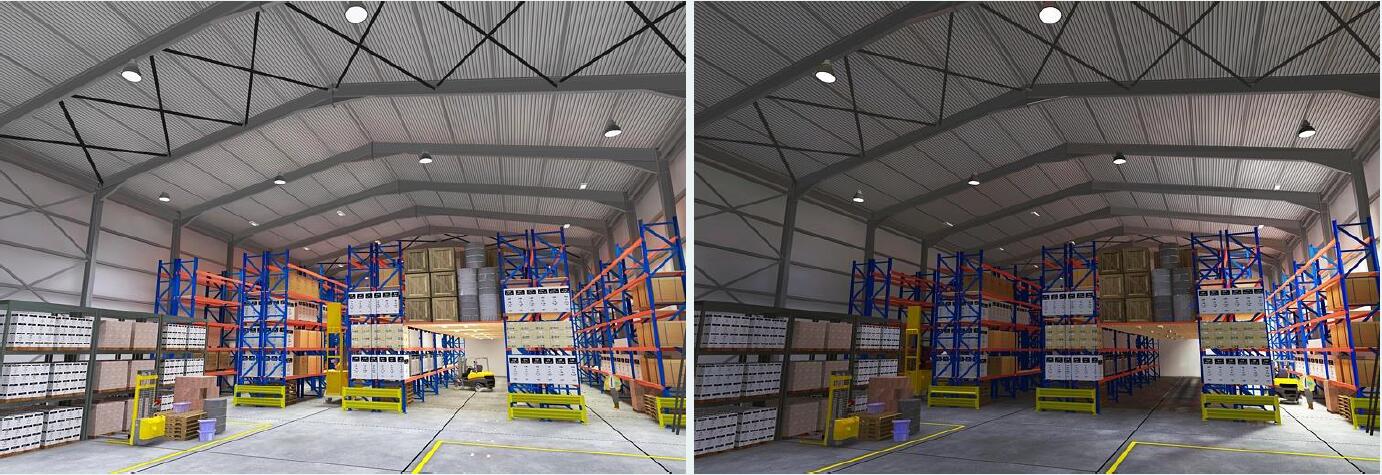
Lighting power density (LPD) refers to energy saving
Lighting Power Density (LPD) is a lighting power requirement defined in North America by the ANSI, ASHRAE and IESNA. Lighting power density (LPD) means the lighting power (W) per unit area (sq.ft) of a building, space, or outdoor area. Lighting Power Density technically represents the load of any lighting equipment in any defined area, or the watts ( View watts to lumens for LED lights. ) per square foot of the lighting equipment. However, in the lighting industry LPDs are used to calculate the project’s lighting power allowance for code compliance.
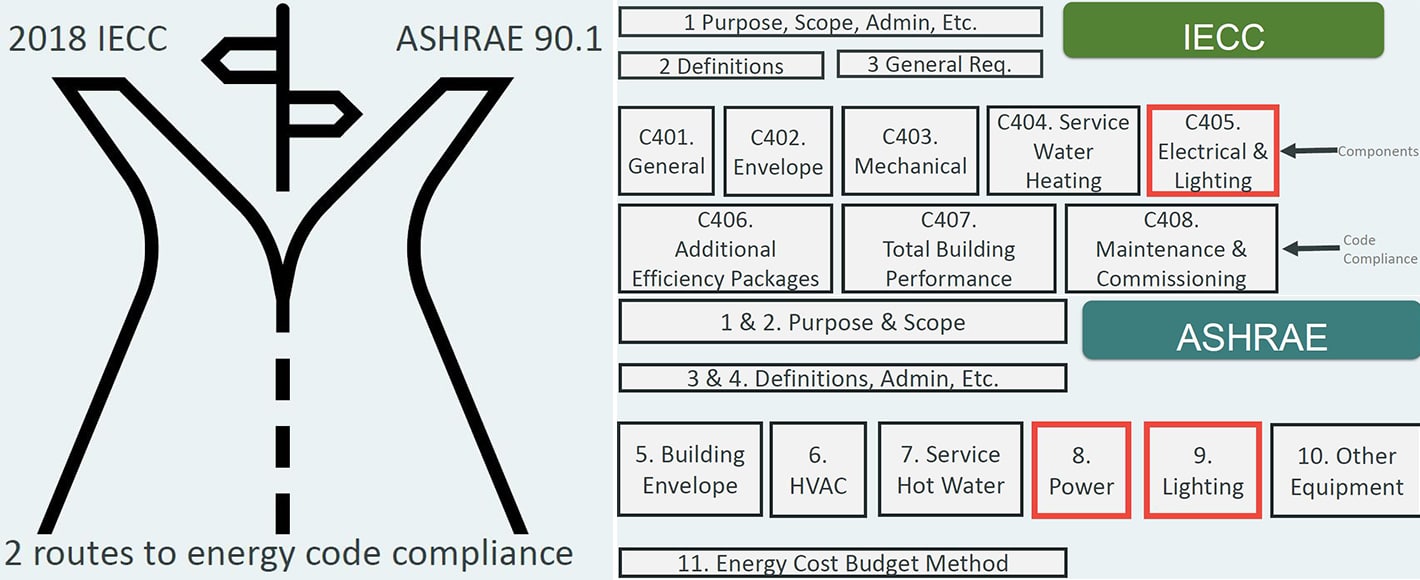
In DIALux, lighting power density refers to the electrical power consumed by lighting equipment (fixtures) per unit area. It is an important parameter in lighting design used to determine the appropriate quantity and type of fixtures required to achieve the desired lighting level. To calculate lighting power density in DIALux, follow these steps: Open the DIALux project and set up the layout for the room or area you need in the project (dimensions, furniture, walls, etc.). In the workspace, select the appropriate fixtures and place them in the desired positions. Then, run the calculation and navigate to the calculation or results page. The lighting calculation results will display the power consumption of fixtures per unit area, which can be used as a reference to assess energy efficiency and compliance with lighting regulations and standards.
The figure below shows the LPD (Lighting Power Density) data from a Dialux simulation of streetlights and industrial lights. Please note that different lighting simulation software may have slightly different steps. It is recommended to refer to the user guide or documentation of your software (AGI32, Relux, Dialux) for accurate guidance on calculating lighting power density.

Summary
This article discusses the purpose, basic principles, and technical measures (such as selecting lighting standards, choosing lighting methods, selecting high-quality and efficient lighting fixtures, and implementing intelligent controls) of green lighting (Energy saving lighting). Green lighting involves the adoption of sustainable, energy-saving, and environmentally friendly approaches in lighting design and application to reduce energy consumption, carbon emissions, and environmental impact. The key to achieving green lighting lies in the comprehensive application of basic principles and technical measures. This includes using efficient lighting fixtures, control systems, and optimized lighting schemes to reduce energy consumption. The selection of lighting standards involves choosing appropriate standards based on requirements and the characteristics of the space. The choice of lighting methods depends on functionality and usage needs, and it involves selecting high-quality and efficient lighting equipment, including LED lighting products with high energy efficiency, long lifespan, and minimal lumen depreciation. The important indicator for assessing green lighting is the Lighting Power Density (LPD), which refers to the lighting power per unit area. A lower LPD value indicates higher energy efficiency and energy-saving levels. Through green lighting, we can achieve the goals of energy conservation, environmental protection, and sustainable development, which are essential for preserving the ecological environment and conserving resources.
Rated Products
Related Blogs
Related Cases
People also ask
Author introduction

Hello Customers,
My name is Taylor Gong, I’m the product manager of ZGSM Tech. I have been in the LED lights industry for more than 13 years. Good at lighting design, street light system configuration, and bidding technology support. Feel free to contact us. I’m happy to provide you with the best service and products.
Email: [email protected] | WhatsApp: +8615068758483

